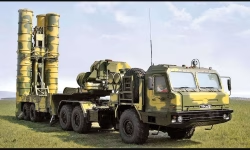Table of Contents
Introduction
Asim Munir nuclear threat to India: It’s not every day that a military leader drops a statement that makes the world sit up, put down its coffee, and say, “Wait… did he just say that?” But that’s exactly what happened when Pakistan’s Army Chief, General Asim Munir, took the stage—not in Islamabad, not in Rawalpindi, but in the United States of America—and sent a political thunderclap rolling across South Asia.
His words were bold, fiery, and unapologetically confrontational. And the target of his speech? India.
In Short
• Munir warns of destroying the Indian dam on the Indus River with missiles
• He likened India to a luxury Mercedes and Pakistan to an old, worn-out dump truck
• Munir meets top US military and political leaders during official visit
Asim Munir nuclear threat to India : The Provocative Statement That Shook the Room
“India is not a vishwaguru, grateful to Trump for ceasefire,” says Asim Munir
— News18 (@CNNnews18) August 10, 2025
Maj Gen (R) Dhruv Katoch hits back, saying “We’ve taught them a lesson in Op Sindoor”
Exclusive input: @Manojkumargupta#AsimMunir #USPolitics #IndiaPakistan #OpSindoor | @_pallavighosh pic.twitter.com/ZR6P5m7quy
In a setting designed for maximum attention, Munir dropped this chilling line:
“If we think we are going down, we’ll take half the world down with us.”
Now, that’s not just tough talk—it’s a direct nod to Pakistan’s nuclear doctrine. The message was clear: push us to the edge, and we’ll push back with everything we have.
This wasn’t the kind of diplomatic language you’d expect in a global forum. It was raw, it was aggressive, and it made sure everyone—from Washington to New Delhi—was paying attention.
Asim Munir nuclear threat to India: Targeting India’s Dams?
As if nuclear hints weren’t enough, Munir added more fuel to the fire:
“10 missiles se faarigh kar denge (we will destroy it with 10 missiles).”
Loosely translated, that’s a warning of missile strikes, specifically targeting India’s dam projects on the Indus River.
Why dams? Because for Pakistan, India’s recent infrastructure push is seen as more than just development—it’s a direct threat to their water security. And here’s the kicker: these projects are tied to the Indus Waters Treaty, a 1960 agreement brokered by the World Bank to regulate water sharing between the two nations.
India`s Strong Response on Asim Munir nuclear threat to India
If Asim Munir dares to touch our dam then Indian Navy will make sure Karachi gets sunk in ocean water forever. pic.twitter.com/VYxpwjgpgG
— Λvenger 🇮🇳 𝕏 (@TheAvenger82) August 10, 2025
The Water War: Treaty on the Brink
The water dispute took a sharp turn after the Pahalgam terror attack in April 2025, which India linked to Pakistan-based groups. In retaliation, India suspended the treaty and restricted water flows from key rivers.
Pakistan’s response? Outrage. Munir accused India of weaponizing water—a move he claimed could jeopardize the lives of 250 million Pakistanis.
By framing it as a humanitarian crisis, Munir wasn’t just talking strategy—he was aiming to stir international sympathy. But it also raises a worrying question: if water becomes a weapon, what comes next?
Also read about – Operation Sindoor: How India’s S-400 Shot Down 5 Pakistani Jets and 1 AEW&C/ELINT Aircraft: IAF chief calls S-400 a ‘Game-Changer’.
To understand the tension, we need to rewind to Operation Sindoor—a covert Indian mission that reportedly struck Pakistani military assets using precision strikes and cyber warfare.
Pakistan didn’t just sit back. Munir’s U.S. trip included high-level Pentagon meetings and even a lunch with Donald Trump, who—never missing a PR moment—claimed credit for “brokering peace” between the two countries.
Why Choosing the U.S. Stage Was No Accident
Delivering threats from American soil wasn’t random—it was calculated.
By making these remarks in the U.S., Munir was playing two cards at once:
1. Amplifying his message on a global stage.
2. Signaling to Washington that Pakistan still matters in the big geopolitical chess game.
But here’s the risk: while it grabs attention, it could also irritate the U.S., a country that has long tried to balance its relationships with both India and Pakistan.
Asim Munir nuclear threat to India: What This Really Means
• Nuclear Brinkmanship: The speech signals that Pakistan is willing to bring nukes into the conversation—even for disputes that aren’t traditionally military, like water sharing.
• Diplomatic Theater: Making these remarks in the U.S. shows Pakistan’s intent to internationalize the issue and sway global opinion.
• Hydro-Politics: Water is emerging as a new weapon in Indo-Pak tensions, and infrastructure could become a strategic target.
Conclusion: A Dangerous New Chapter
General Asim Munir’s speech wasn’t just a warning—it was a high-stakes performance designed to rattle India, grab headlines, and remind the world that South Asia’s flashpoints are very much alive.
By mixing nuclear threats with water politics and delivering it all from the U.S., Munir has ensured that the tension between India and Pakistan is once again front-page news.
The real question? Whether this will push both nations toward dialogue—or toward a line that neither can afford to cross. One thing’s for sure: the next moves on this geopolitical chessboard will be watched by the entire world.
Operation Sindoor: How India’s S-400 Shot Down 5 Pakistani Jets and 1 AEW&C/ELINT Aircraft: IAF chief calls S-400 a ‘Game-Changer’.
The GeoLens – India || Defence || Global Affairs

Pratik Kondawale
Strategist | Indian Defence & Global Affairs
Founder of GeoLens.in, Pratik writes in-depth analysis on India’s defence strategy, military tech, and global power shifts delivering sharp insights through an Indian lens.

